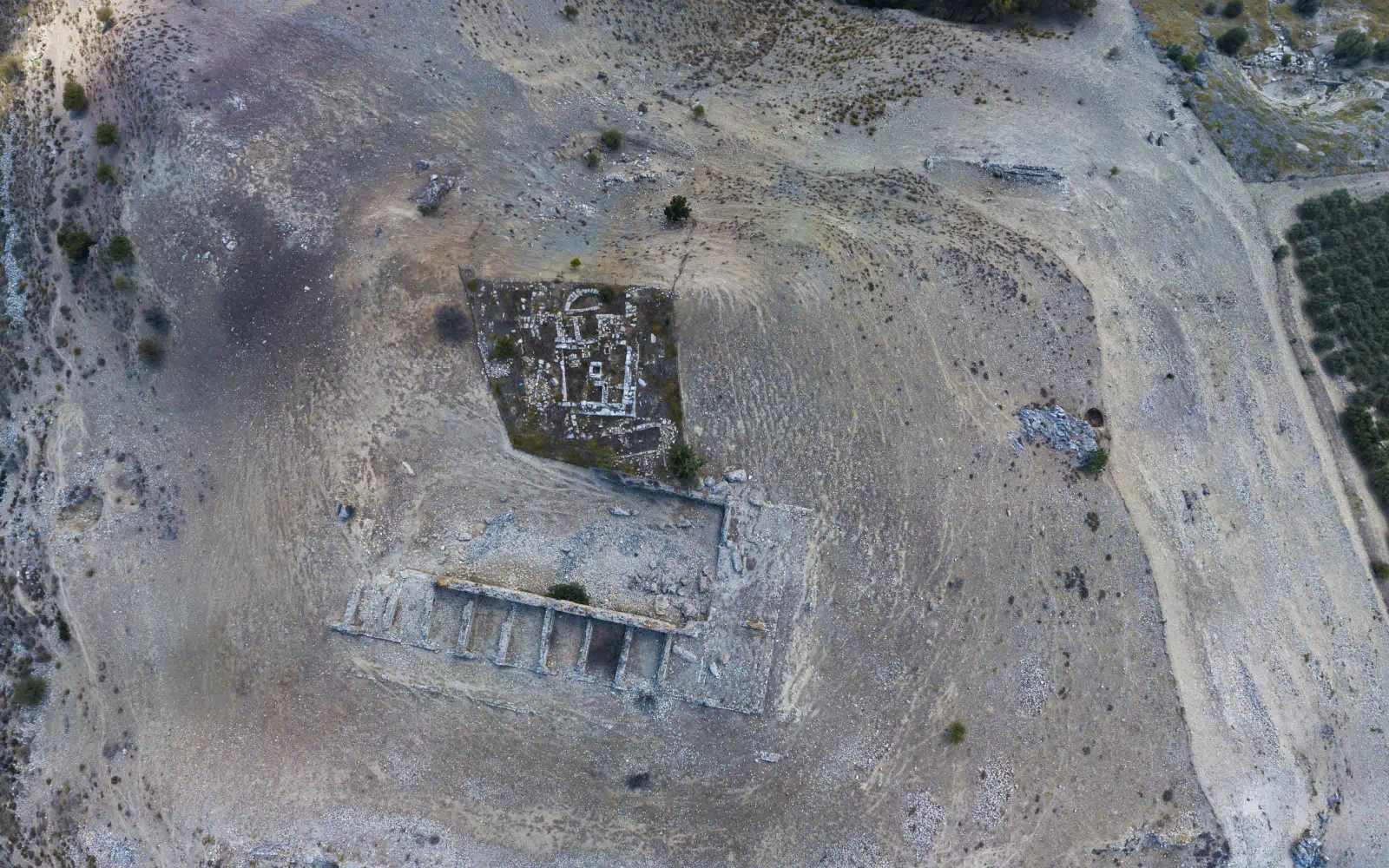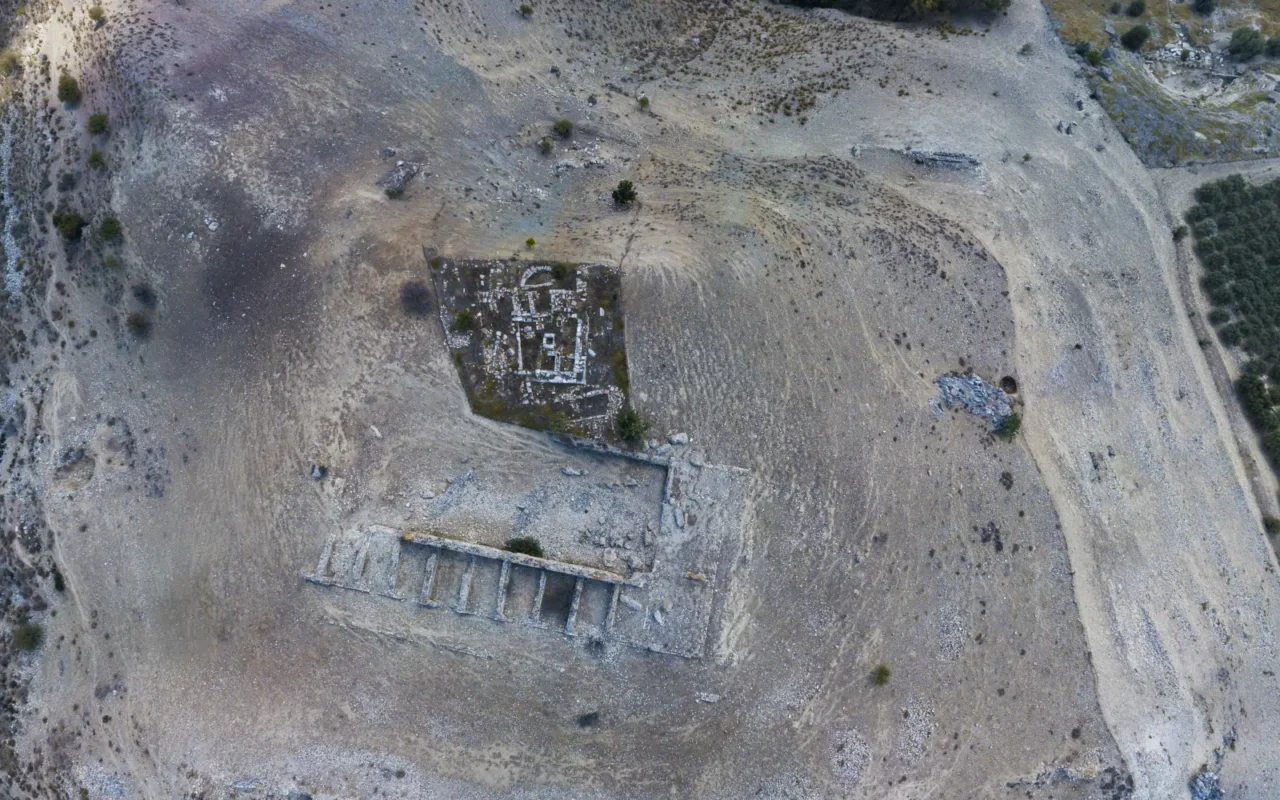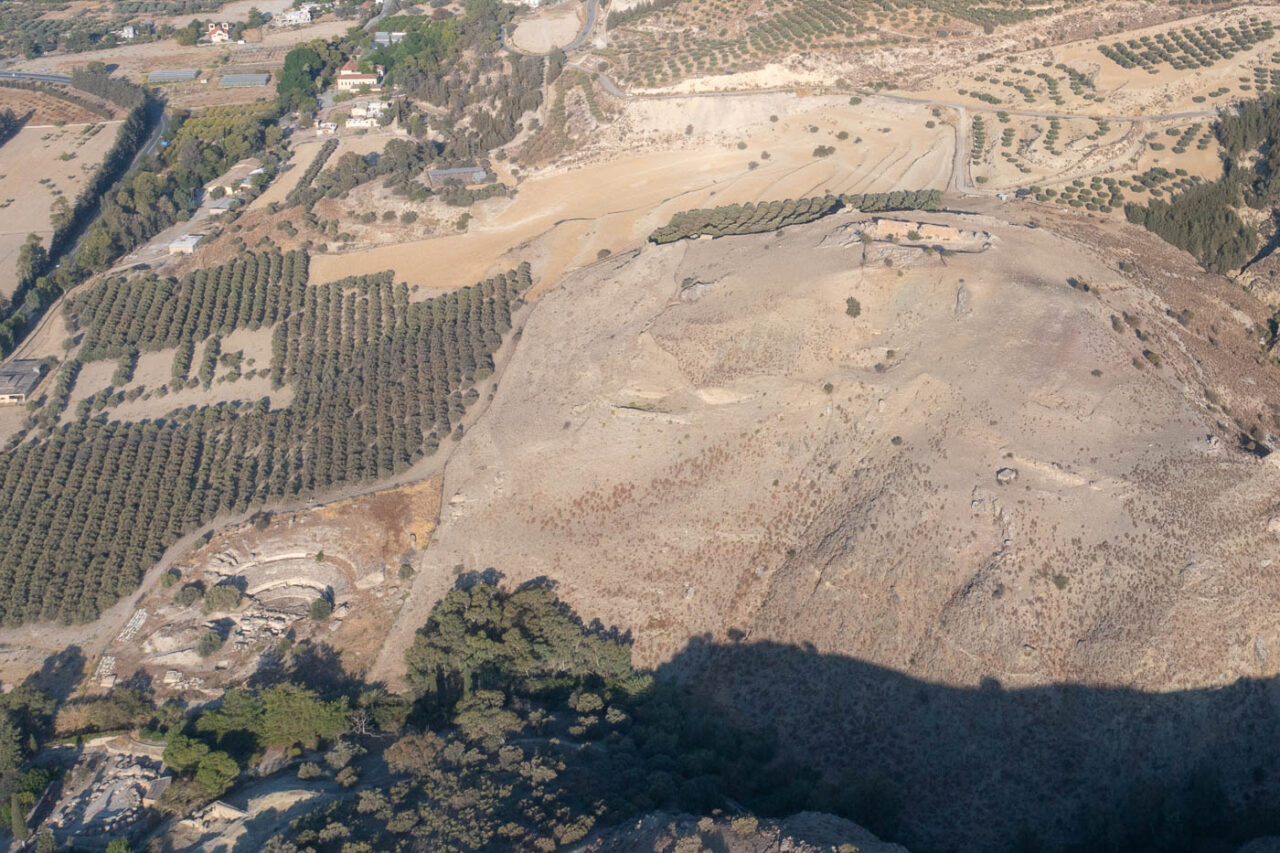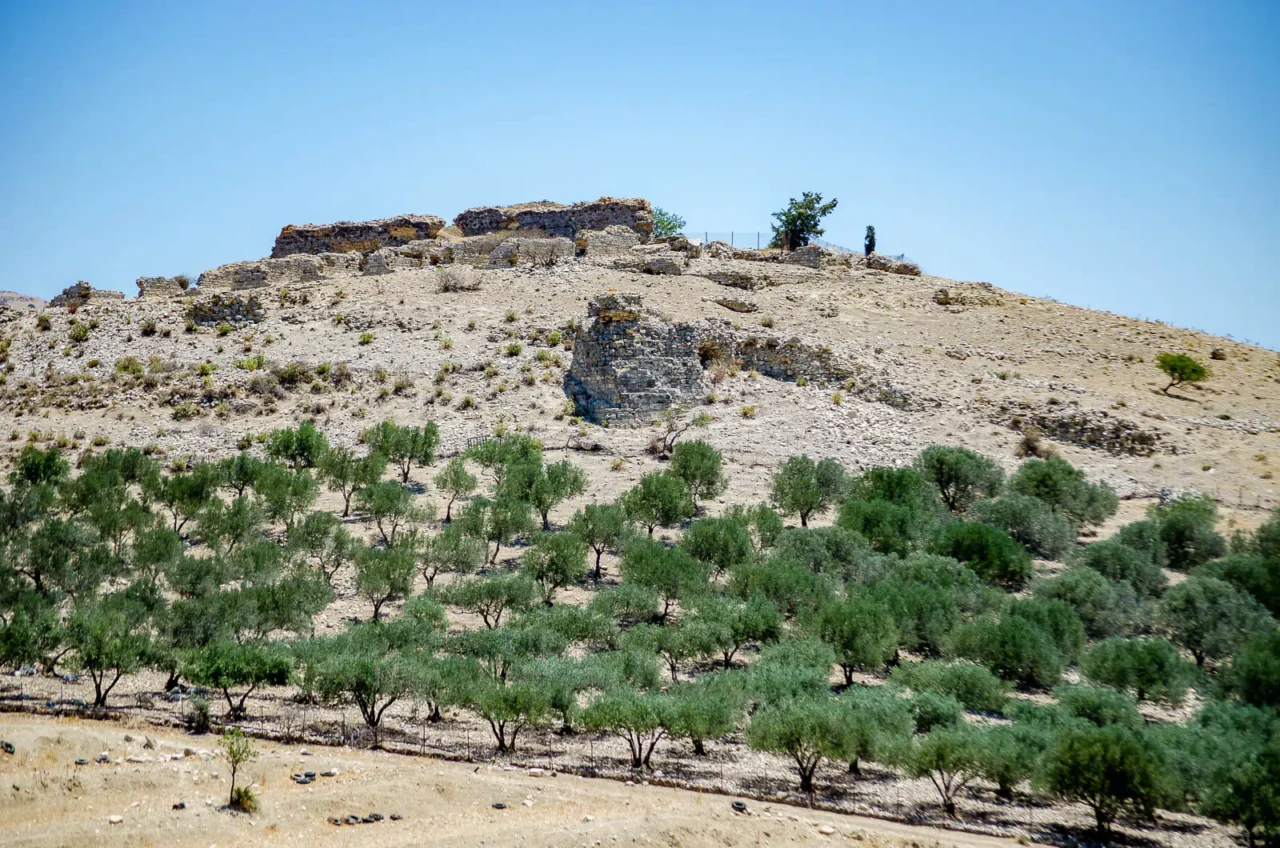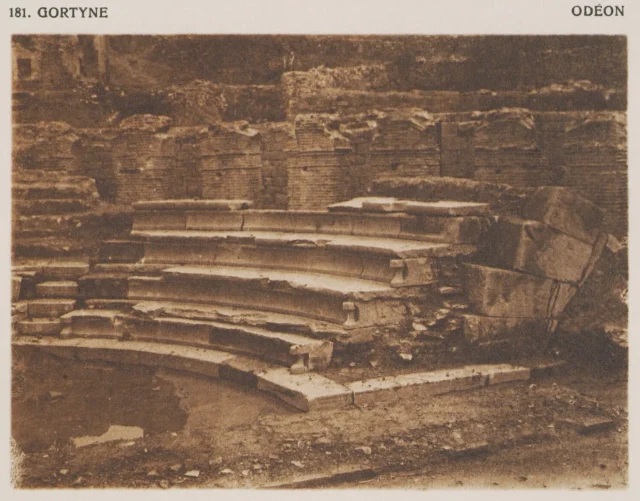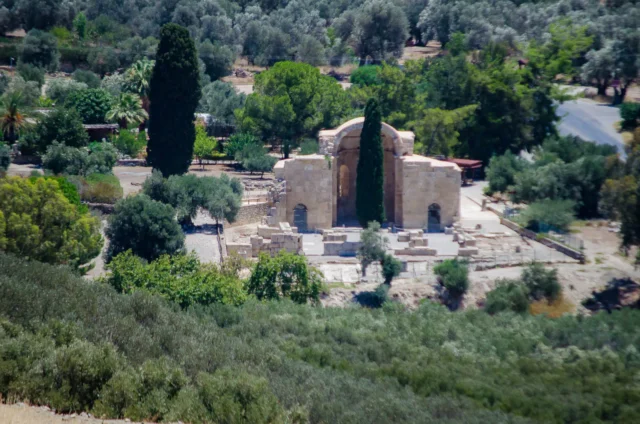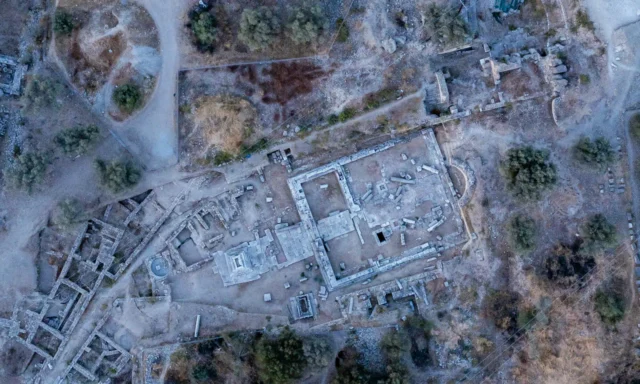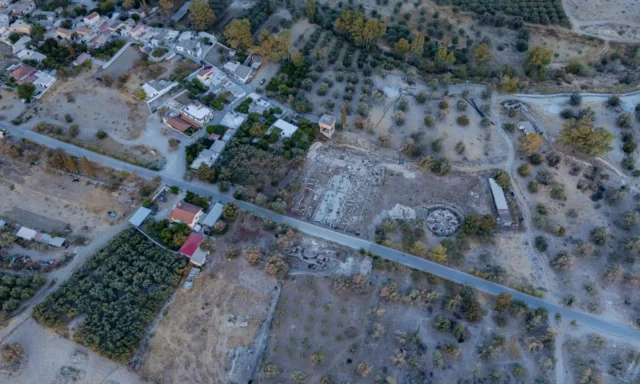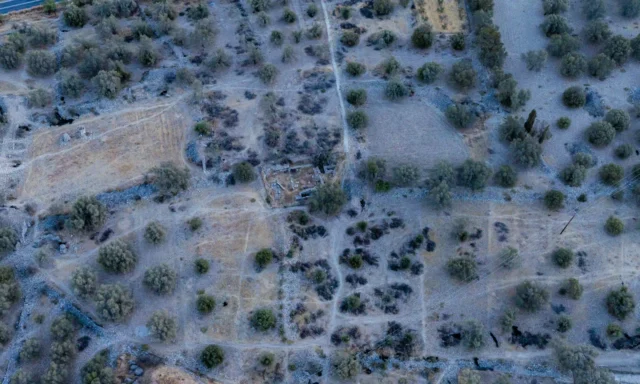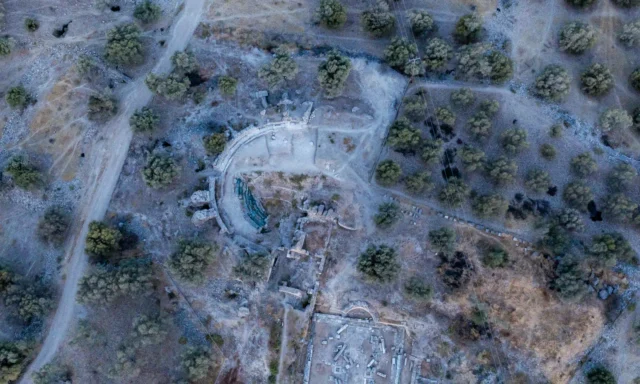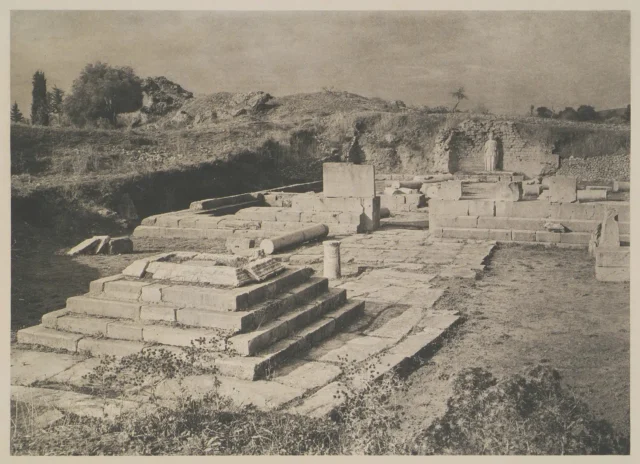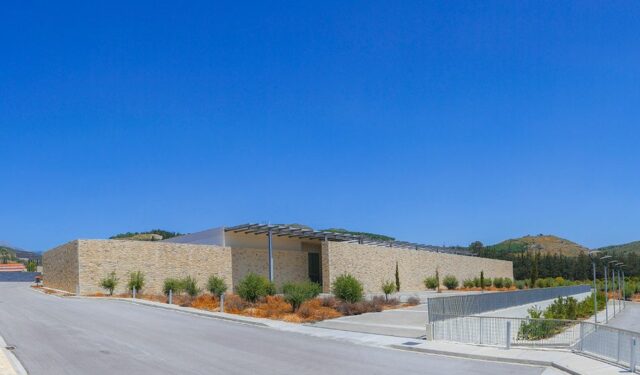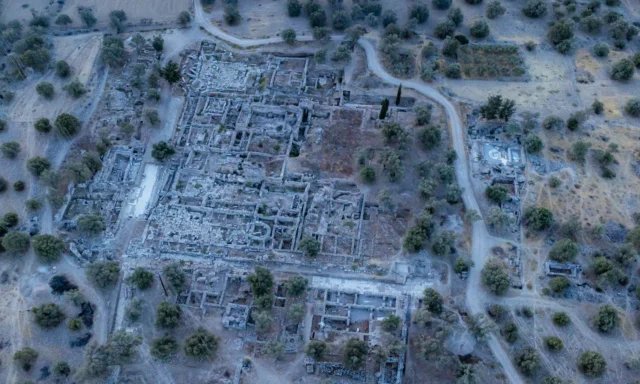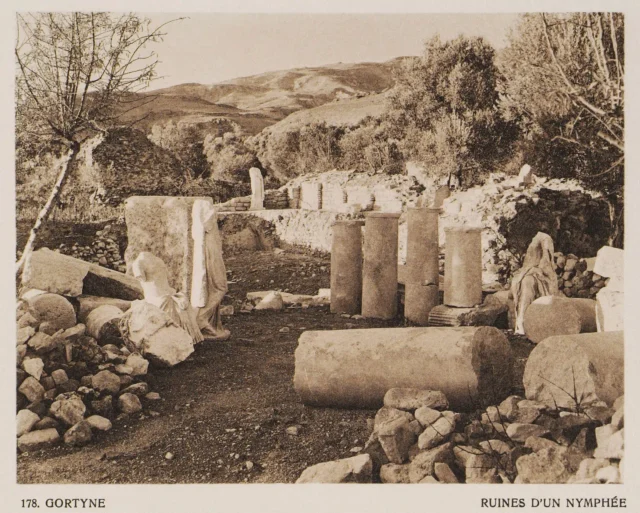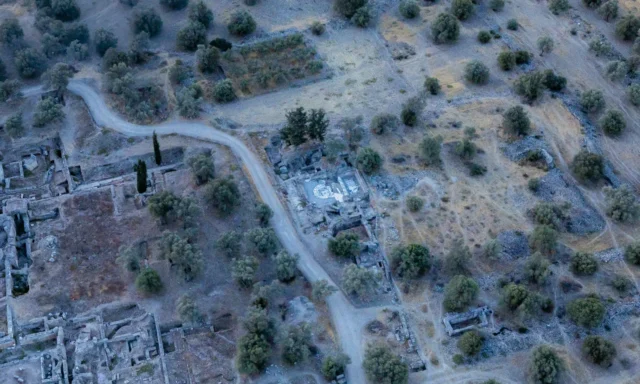A Strategic and Symbolic Center
The Acropolis of Gortyna, located on a hill overlooking the ancient city of Gortyna, has played a pivotal role in the city’s history, serving as a strategic stronghold and a symbol of power and resilience throughout various periods.
The Early Acropolis: From Neolithic to Hellenistic Times
The hill’s strategic elevation likely attracted early settlers, with evidence of human activity dating back to the Neolithic period. During the Bronze Age, the Acropolis probably functioned as a fortified refuge and a center of authority, although concrete evidence of structures from this time remains scarce.
In the Hellenistic period, a new acropolis was established on a nearby, larger hill. This Hellenistic Acropolis, fortified with robust walls and towers, underscored Gortyna’s military prowess and its aspirations for regional dominance.
The Proto-Byzantine Acropolis: Adaptation and Survival
The decline of the Roman Empire and the growing threat of invasions prompted the construction of a new acropolis on the original hill during the Early Byzantine period. This fortified citadel, built upon the remnants of an earlier settlement, became a haven for the city’s inhabitants during times of conflict.
The Proto-Byzantine Acropolis featured a strong defensive wall, incorporating towers and gates. Within its walls, various structures were built, including churches, dwellings, and administrative buildings, indicating a dynamic community that sought refuge and continued to function within the fortified space.
Archaeological Findings
Archaeological excavations have unveiled a wealth of information about the Acropolis’s history and purpose. The well-preserved fortification walls, towers, and gates offer insights into Byzantine defensive architecture. The discovery of churches and other structures within the Acropolis underscores its role as a center of both religious and secular life.
Key Features
- Fortification Walls: The Acropolis is encircled by well-preserved fortification walls, demonstrating the defensive architecture of the Byzantine period.
- Churches: The remains of two churches, one built upon the foundations of an earlier temple, highlight the significance of Christianity in Gortyna during the Byzantine era.
- Residential and Administrative Buildings: Excavations have also revealed remnants of residential buildings and administrative centers, suggesting a thriving community within the Acropolis walls.
- “The Castle”: A large building, referred to as “the castle,” is a prominent feature on the Acropolis. Its exact function remains uncertain, but it likely served as an important administrative or residential complex.
The Acropolis and Gortyna
The Acropolis, although physically separate from the main urban area, was integral to Gortyna’s life and evolution. It provided a safe haven during conflicts, a center of power and authority, and a symbol of the city’s strength and endurance.
The relationship between the Acropolis and the lower city changed over time. In the Hellenistic period, the larger Acropolis on the adjacent hill held prominence. However, the construction of the Proto-Byzantine Acropolis on the original hill signaled a shift in focus, reflecting the changing needs and challenges of the Byzantine era.
The End of an Era
The Arab conquest of Crete in the 9th century CE brought an end to Gortyna’s history, including that of its Acropolis. The city was abandoned, and its once-imposing citadel fell into ruin. Today, the Acropolis remains a silent testament to the city’s past, its weathered walls and remnants of structures offering a glimpse into the lives of those who once inhabited this ancient stronghold.
Archaeological Site: Key Points
- Construction Period: Primarily Early Byzantine period (c. 4th-7th centuries CE), with evidence of earlier activity dating back to the Neolithic period
- Location: On a hill overlooking the ancient city of Gortyna, Crete, Greece
- Dimensions: The fortified area encompasses the summit of the hill, with a perimeter of approximately 835 meters
- Historical Significance: Served as a fortified citadel and a center of religious and civic life during the Early Byzantine period
- Current Status: The Acropolis is part of the larger archaeological site of Gortyna, with ongoing excavations and research enhancing our understanding of its history and importance.
Reference
-
Gigourtakis, Nikos M. 2014. “The Early Byzantine Fortified Acropolis of Gortyn.” In Proceedings of the 1st International Interdisciplinary Conference of Gortyna on the History, Spirituality, Art, and Culture of the Cretan South, edited by Efi Psilaki and Manolis Drakakis, 153-168. Heraklion.

